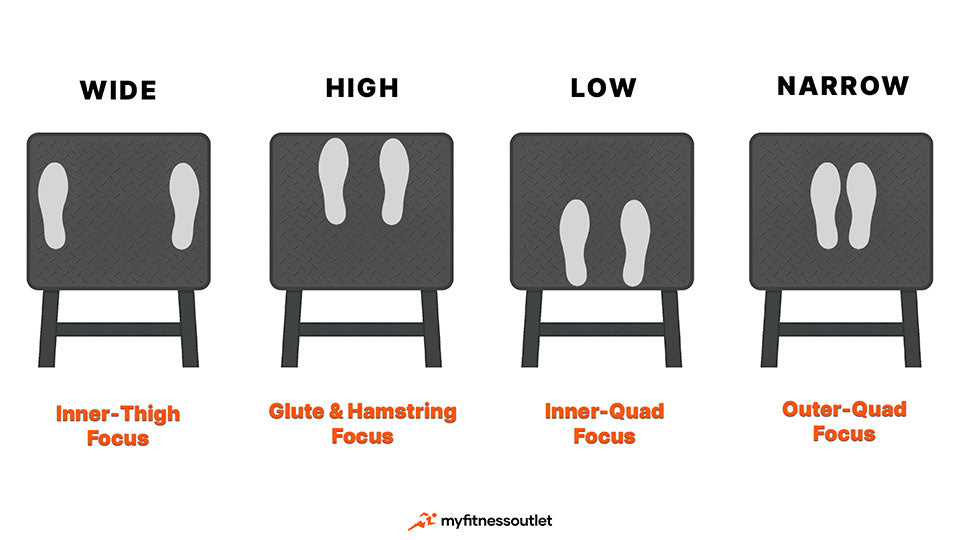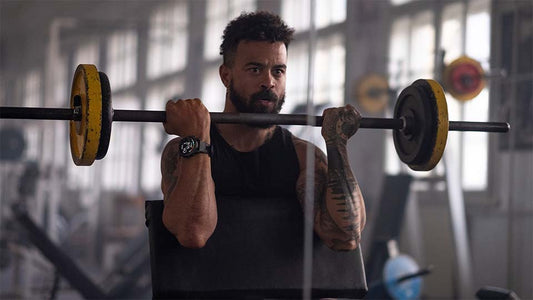Leg Press Foot Placement - What's the Most Effective?
Foot position on the leg-press sled dictates which muscles dominate the lift. A high stance hammers glutes and hamstrings; a low or narrow stance torches quads, while a wide setup hits inner thighs. Rotate all four positions to build balanced strength, dodge plateaus, and spare your knees.

Why Foot Placement Matters
On a leg press, tiny changes in where you place your feet drastically change which muscles fire. A high stance emphasizes hamstrings and glutes; a low stance pushes the quads to the limit. Adjust width or height any time to meet your goals, avoid plateaus, and keep your knees happy.
High Foot Placement
Primary focus: hamstrings and glutes
With feet set higher on the sled, your hips flex deeper while your knees stay friendlier, shifting workload to the posterior chain. The angle lets you load more weight safely and improves hip mobility—key for sprint speed and deadlift carry-over.
Low Foot Placement
Primary focus: quadriceps
Drop your feet lower to isolate the quads. Keep control—no knee lockout—to protect joints while torching the front of your thighs. Ideal for boosting vertical jump, stair-climb power, and sculpted leg definition.
Wide vs Narrow Stance
- Wide stance – lights up the inner-thigh adductors and enhances stability for heavy squats.
- Narrow stance – funnels load back into the quads for peak definition and knee stability.
Rotate both widths into your program to balance strength and fill in weak spots.
Leg-Press Variations for Complete Development
- Single-leg press to fix imbalances
- Tempo work (slow eccentrics, mid-rep pauses) for hypertrophy
- Seat-angle tweaks to shift load distribution
For a deeper dive on tempo tricks, see this foot-placement guide.
Key Takeaways
High, low, wide, or narrow—each foot placement rewires muscle recruitment. Cycle through them to hit quads, hamstrings, glutes, and adductors evenly, break plateaus, and keep training fresh.
Want more lower-body tips? Explore the science behind leg presses via the NIH review or browse these proven leg exercises.












